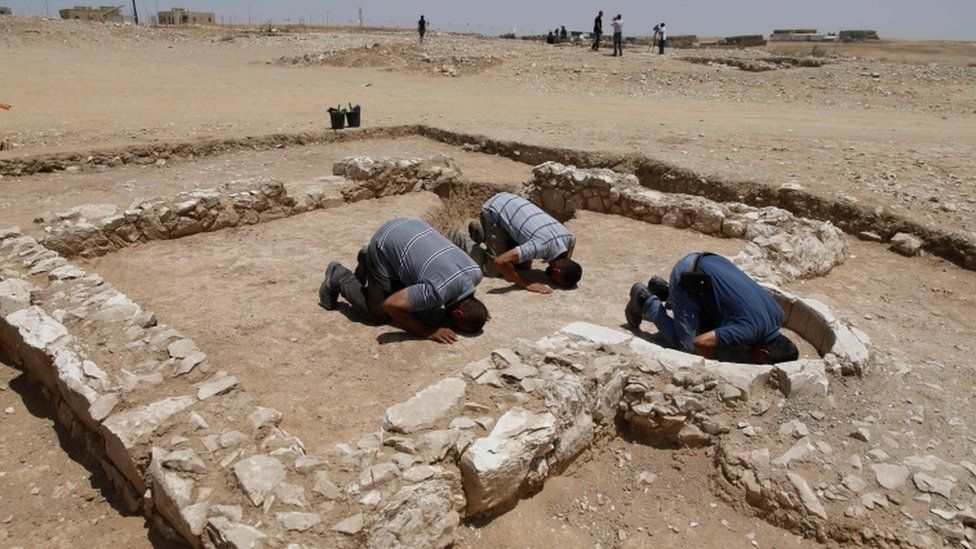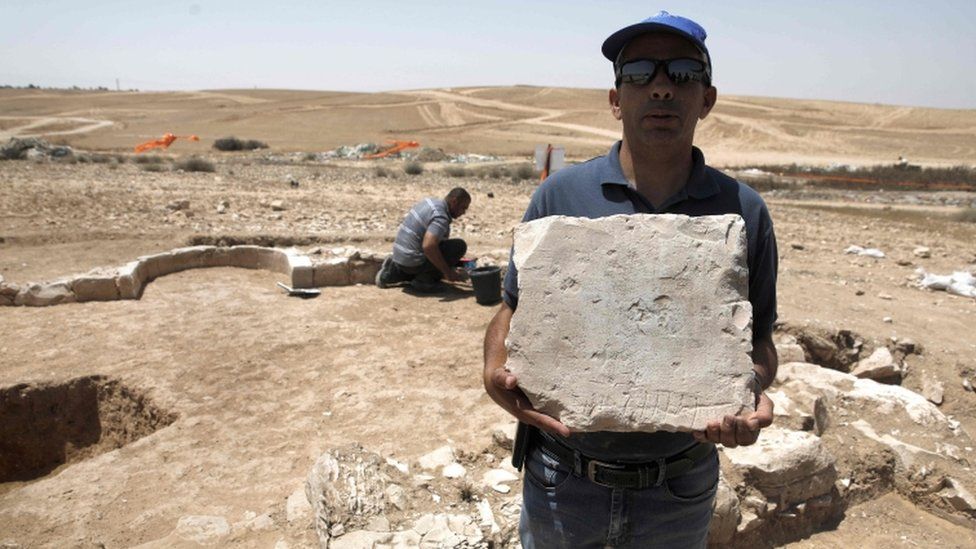Israel Archaeologists unearth 1,200-year-old mosque
In an archeological dig in the mainly Bedouin town of Rahat, north of Beersheba remains of a 1200-year-old rural mosque, one of the oldest in the world was discovered.
“The Middle East and the world in general and, above all, in the northern part of Beersheba, where a similar building has not been found so far, it is a rare find since this time,” says Shahar Zur, and Dr. Jon Seligman, the Directors of the dig, on behalf of the Antiquities Authority.
“There have been great well-known mosques in Jerusalem and Mecca since this period, but here is evidence of an ancient house of worship, that seems to have been used by farmers living in the area,” they added.
“We found the ruins of the open-air mosque, a rectangular building with a “Mihrab” (a prayer niche) facing south, to the direction of Mecca.
These features are evidence for the purpose for which this building was used, many hundred years ago.”

A farm from the end of the Byzantine period (500-600 C.E.) was also uncovered in the excavations, as well as a small settlement from the beginning of the Islamic period (600-700 C.E.) with remains of buildings that were split into living spaces, open courtyards, storage space and places used for food preparation, including “tabbuns” (open-air fireplaces used for baking).
“These sites were part of the agricultural system that existed in the northern Negev in early times,” explained Zur and Seligman.
“The soil was suitable for growing grains and the groundwater in perennial streams attracted settlers here who wanted to cultivate the land.”
“This is one of the earliest mosques known of from the time of the first arrival of Islam in Israel, after the Arab conquest in 636 C.E.,” said Professor Gideon Avni, an expert in the period at the Antiquities Authority.
“The discovery of the mosque next to an agricultural town between Beersheba and Ashkelon indicates the processes of cultural and religious change which the country underwent during the transition from the Byzantine period to the early Islamic period.”
“The uncovering of the town and the mosque next to it, significantly contribute to studies on the history of the land in this stormy period,” he added.
“According to historical Islamic sources, the new Muslim government distributed plots of land to its senior officials, including Omar ibn al-Etz, an Arab military commander who took over the land of Israel and Syria.
The continuation of excavations on the site will perhaps provide answers to the questions regarding the foundation of the settlement and the nearby mosque and its connection to the Arab conquerors of the land of Israel.”

The dig was headed by the Israel Antiquities Authority alongside Bedouin residents and youth from towns in the area as a new neighborhood was established in the city.
An initiative by the antiquities authority engages organized groups of youth during the summer vacation in archaeological digs, allowing them to earn a fair wage, engage with the past and also collect experiences for their whole lives.





